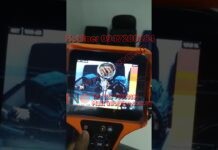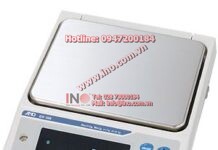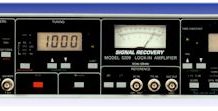Overview:
It is designed specifically for plant requiring only periodic monitoring of the sulphuric acid dewpoint temperature for boiler efficiency checks, corrosion protection and evaluation of the effectiveness of corrective measures such as fuel additives and changes in the combustion conditions.
Key Feature
– Key process parameters measured and calculated – Essential operator information including SO3
– Easy to use precise control – Obtain a reading in minutes
– Weighs only 10kg (22lb) – Easily carried around plant
– Robust, industrial design – For daily use in the harshest plant environments
– Data logging – Capture and store over 10,000 readings
– Simple field maintenance – Easy-fit measurement cell – replace in minutes
– Traceable Calibration – To national standards in our own UKAS approved lab
Key Benefits
– Monitor SO3 slip within an ESP to improve ash collection efficiency whilst minimising acid aerosol emissions
– Prevent Air Heater Fouling
– Reduce maintenance caused by cold-end corrosion in maintaining the exit gas above the dewpoint temperature
– Monitor acid aerosol emissions (H2SO4 / SO3)
– Monitor and reduce acid smut emissions
Specification
| Technical Details |
|---|
| Measuring | ||
|---|---|---|
| Technique | Conductive Cell Technique | |
| Measurment Parameters | Range | Units |
| Acid Dewpoint Temperature | 100 – 200 °C (210 – 390 °F) |
Displayed in °C or °F |
| Flue Gas Temperature | 0 – 450 °C (32 – 840 °F) | Displayed in °C or °F |
| *Minimum Metal Temperature | 100 – 250 °C (210 – 480 °F) |
Displayed in °C or °F |
| *SO3 concentration | 0.1 – 9999 | ppm, mg/m3 or lb/mmBTU |
| *H2SO4 concentration | 0.1 – 9999 | ppm, mg/m3 or lb/mmBTU |
| *Toxic Release Inventory | 0 – 200,000 | kg/hr, tonnes/yr, lb/hr, tons(US)/yr |
| *calculated values | ||
| Accuracy | ±0.5 °C dewpoint temperature | |
| Resolution | 0.1 °C |
| Control | |
|---|---|
| Display | ¼ VGA color LCD |
| Indicators (LED type) | ON (Power), Battery Low, Battery Charging, Fault |
| Data Logging | All data values logged. Log interval 1 sec. to 10 min. Storage for at least 10,000 records |
| Compliance | |
|---|---|
| Electrical Safety | EN 61010-2 |
| EMC | EN 61326 (Industrial) |
| Protection from dust and water | |
| Instrument in bag | IP42 of BS EN 60529 |
| Probe | IP65 of BS EN 60529 |
| Vibration (probe only) | BS EN 60068-2-6 (10 Hz to 150 Hz at 19.6 m.s |
| Inputs/Outputs | |
|---|---|
| Modbus Communications | RS232 or RS485 isolated 2-wire RTU mode, 19200 baud, 8 data bits, even parity, 1 stop bit |
| Current Loop outputs | 8 channels (4 – 20mA) ±0.1 mA non-isolated, 300 ? max. |
| Current Loop intputs | 2 channels (4 -20 mA) ±0.1 mA non-isolated, powered |
| USB interfaces | USB master for Flash memory drives |
| USB function | ActiveSync for connection to a PC |
| Electrical | |
|---|---|
| Power Supply | 95-265 V a.c. ±10%, 50-60 Hz, 30 Watts |
| Rechargeable battery | 2 x 6 V 4 Amp. hour Typical 8 hour operation |
| Battery charging time | 6 hours maximum |
| Air Requirements | |
|---|---|
| Air Supply | Clean, dry, oil-free air |
| Supply pressure required | 4 – 10 bar (60 – 150) psi |
| Flow rate | 1 to 150 l/min (0.05 to 5 cfm) at 4 bar (60 psi) |
| Maximum flow rate | 600 l/min (20 cfm) |
| Air connection | ISO G3/8 (3/8 BSPP) male thread supplied |
| Environmental | |
|---|---|
| Operating Temperature | -20 to +50 °C (-4 to 122 °F) |
| Max. flue gas temperature | 450 °C / 840 °F |
| Mechanical | |
|---|---|
| Overall size in carry bag | 500 x 225 x 300 mm (20 x 9 x 12 ins) |
| Weight (incl. bag and hoses) | 9.8 kg (22 lb) |
| Cables and hoses | 2 air hoses, signal and power cables supplied, all 3 m (10 ft) |
| Sample Probe | |
|---|---|
| Material | Stainless Steel |
| Detector | Pyrex glass with platinum electrodes |
| Calibration | Option for UKAS calibration |
| Probe access port | Minimum requirement: 50 mm / 2 inches diameter |
| Connections | Signal cable to Control Unit; Air hose to Control Unit |
| Maximum temperature | Shaft 450 °C (840 °F) ; Handle 75 °C (170 °F) |
| Minimum temperature | -20 °C (-5 °F) |
| Length | 1.2 m (4 ft) standard; Length Options: 2.1, 3.0 m (7, 10 ft) |
| Overall size in carry bag | 1600, 2500 or 3400 x 320 x 80 mm (5’ 4", 8’ 4", or 11’ 4" x 13" x 3.5") |
| Weight (in bag | 6.2 kg (14 lb), 8.6 kg (19 lb), 11 kg (24 lb) |
Applications:
- SO3 Injection to improve Precipitator performance
- Monitoring Fuel Additives
- Quantify and Reduce Toxic Release Inventories (TRI)
SO3 Injection to improve Precipitator Performance
The injection of SO3 into flue gas immediately prior to the precipitator changes the resistivity of existing particles and enhances the performance of the Electrostatic Precipitator (ESP ).
).
When the ash is over-saturated, the process gas has higher levels of free SO3, which will create a higher acid dewpoint temperature and hence a higher probability of cold end corrosion and acid emission. If there is too little SO3, the ESP performance will suffer leading to increased particulate emissions to the atmosphere.
Monitoring Fuel Additives
Many processes require the injection of MgO, inorganic metallics or activated Magnesium, for the minimization of SO3formation and reduction in the corrosion and pollution effects of burning high sulphur fuels.
Too little of these additives will lead to higher levels of SO2 forming free SO3, which in turn will increase the acid dewpoint temperature. This can result in increased emission of pollutants into the atmosphere, and lower thermal efficiency.
If the process is over saturated with additives, this may cause excessive dust or ash, creating dirty boilers, which will limit boiler performance, create hot side inefficiencies and in some cases inhibit the combustion gas flow through the process, consequently lowering the performance.
Quantify and Reduce Toxic Release Inventories (TRI)
Sulphuric acid aerosol emissions created by 'free SO3' are considered a toxic release. It is necessary to quantify these emissions as part of a Toxic Release Inventory (TRI).
Free SO3
Free SO3 in flue gas streams from coal and oil-fired boiler systems can be defined as the level of SO3 in the vapor state, which does not include SO3 already deposited onto the fly ash. This is the most significant parameter in the acid aerosol emissions.
At temperatures below 175 °C / 350 °F, 99.7 % of the free SO3 becomes H2SO4 in the presence of H2O concentrations greater than 8 %.
Sulphuric acid mist is formed at flue gas temperatures below the acid dewpoint temperature.
Monitoring Solutions
The most direct method available to quantify these emissions is to measure the acid dewpoint temperature (ADT) from which direct concentrations of sulphuric acid (H2SO4) can be calculated.
Acid dewpoint temperature monitoring is the key parameter for operators to balance acid emissions with efficiency; and indicate the onset of reportable TRI emissions.
LANCOM 200 – portable analyzer
It is designed specifically for plant requiring only periodic monitoring of the sulphuric acid dewpoint temperature for boiler efficiency checks, corrosion protection and evaluation of the effectiveness of corrective measures such as fuel additives and changes in the combustion conditions.





















… [Trackback]
[…] Find More Information here on that Topic: ino.com.vn/khac-do-luong-kiem-tra/land-portable-sulphuric-acid-dewpoint-temperature-monitor-model-lancom-200/ […]
… [Trackback]
[…] Info on that Topic: ino.com.vn/khac-do-luong-kiem-tra/land-portable-sulphuric-acid-dewpoint-temperature-monitor-model-lancom-200/ […]